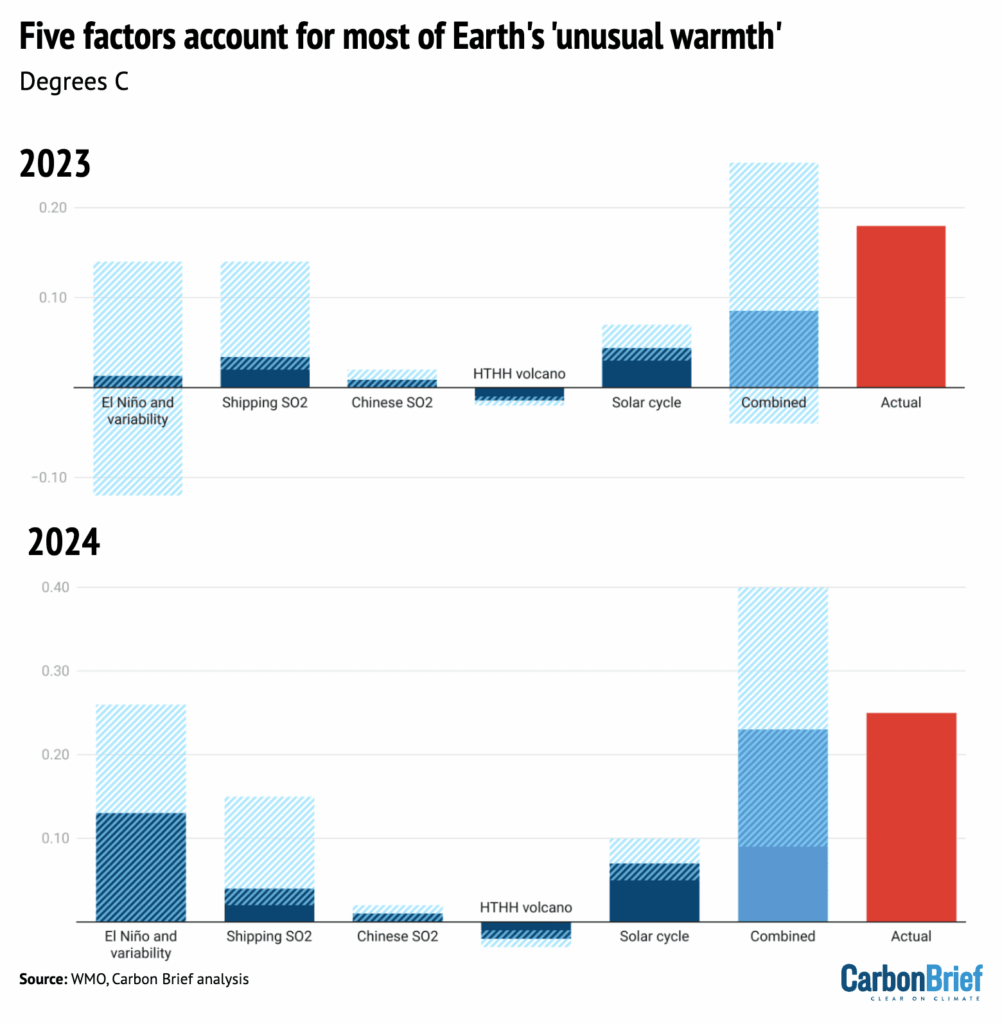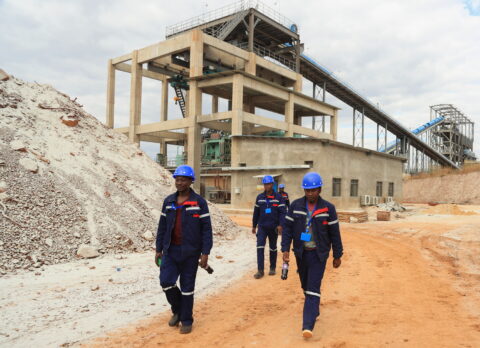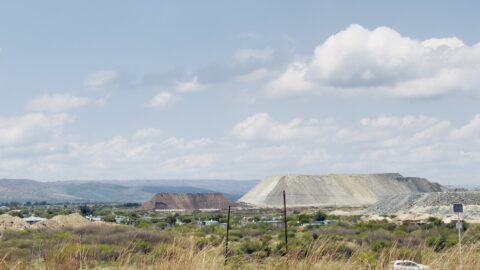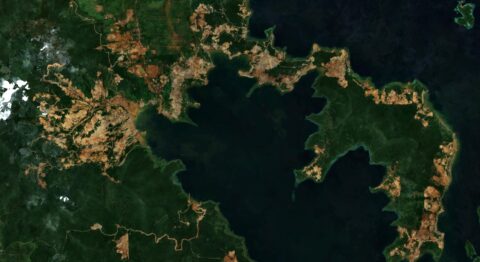The 8th Adaptation Futures conference will be held in Ōtautahi Christchurch, New Zealand from October 13-16, 2025. The climate challenges of Pacific island nations will form a key part of the event.
Vanuatu, a collection of 83 islands separated by around 1,300 km deep in the South Pacific Ocean, is among a group of ocean states widely regarded as uniquely exposed to climate change.
The World Risk Index, created by German academics and NGOs, has consistently ranked Vanuatu as the world’s most vulnerable country to climate risks and natural disasters.
Geography plays a large role in this because of Vanuatu’s proximity to the Pacific “Ring of Fire” – an area of strong volcanic activity and earthquakes – and its position close to the centre of a cyclone belt. Cyclonic storms have become more frequent and powerful in recent years due to global warming.
Category 5 tropical cyclones – the most severe – are particularly occurring more often. In 2015, Cyclone Pam damaged an estimated 90% of all buildings in Vanuatu and impacted half the population. This was followed by Cyclone Harold in 2020 when winds of up to 125 miles per hour caused an estimated US$768 million in damages across the Pacific.
Another reason for Vanuatu’s vulnerability is its scattered population around coasts that are exposed to rising sea levels. A total of 325,000 people live across 65 islands, characterised by rugged terrain and limited infrastructure.
Despite these limitations, the country is finding new and innovative ways to protect its population against climate threats and regain its economic competitiveness.
An ongoing project on the country’s largest island, Espiritu Santo, is trialling techniques to support communities adapt. The project grant – funded by the Adaptation Fund and managed by UNDP through the Adaptation Fund Climate Innovation Accelerator (AFCIA) – focuses on a number of areas that can benefit these isolated communities. Key components include ecosystem restoration, disaster preparedness, improving food security and strengthening institutions.


Disaster committees
The Paris Agreement set a clear goal of limiting global temperatures to well below 2 degrees Celsius with the aim of keeping to a safer ceiling of 1.5C above pre-industrial levels.
Under current scenarios, where average temperatures increase by more than 2C, island nations such as Vanuatu are predicted to lose 20% of their GDP each year due to climate disasters. This is despite data which shows Vanuatu contributed less than 0.01% of global carbon dioxide emissions.
Joses Togase, a project manager at Santo Sunset Environment Network (SSEN), an Indigenous environmental group on the island, told Climate Home News that people in the region are facing serious threats from climate change. “Rising sea levels are damaging the coastal zones and eroding valuable local resources that people depend upon to support their livelihoods,” he said.
Further inland, he commented, people are experiencing an increase in landslides, soil erosion and flooding which is impacting crop production, forest cover and access to freshwater. “The unpredictable changing weather, heavy rainfalls, droughts, very rough storms, and more frequent tropical cyclones are major challenges the communities are facing,” he added.
Climate disasters challenge right to safe and adequate housing
In response, the Espiritu Santo project has supported community leaders, forest rangers and climate-related disaster committees to adapt to a changing climate. In 2023, the island was hit by two Category 5 cyclones within a week. The committees – with the help of the SSEN – immediately undertook a damage assessment and identified emergency needs so the government could act quickly.
In the future, this work will be supported by an upgraded early warning system and improved internet access – thanks to solar-powered satellite communication – to allow the community to access live weather advice.


How to farm smart
Food security is often a concern in remote regions and extreme weather adds another layer of vulnerability to communities on Vanuatu. Under these circumstances, subsistence farmers need to switch to crops which have higher yields in a shorter growing season and are able to withstand much harsher weather conditions.
The project, alongside encouraging families to maintain their traditional methods of food production, is seeking to raise awareness of climate-smart agriculture. Demonstration plots have been established to plant drought-resistant crops, such as manioc, kumara and taro.
Growing cover crops between seasons to protect the soil, and intercropping, where more than one crop is grown side-by-side in the same field, are also promoted. These practices are designed to improve soil health, prevent erosion and protect against extreme weather.
Togase believes these practices should be shared with other Pacific islands facing similar climate threats. “The traditional planting calendar, food crop planting and preservation are some of the important lessons,” he commented.
Advancing women’s rights and empowerment in climate adaptation
Increase in local awareness
Human settlements on Vanuatu date back over 3,000 years. In that time, Indigenous peoples have dealt with a range of environmental risks. The climate crisis is the latest in that series and local people are looking to utilise – and adapt – traditional ways of life to overcome these challenges. Groups such as SSEN provide an important connection between the community and government as they collectively navigate a way forward.
According to Togase, recent interventions on Espiritu Santo have “increased understanding and realisation among the local people to become more conscious and alert” in mitigating climate threats. This has, in part, been achieved through Indigenous knowledge sharing and respecting community governance.
As Vanuatu faces an uncertain future, its people aren’t shying away from these threats, but using nature, existing customs and new ideas to their advantage.
Adam Wentworth is a freelance writer based in Brighton, UK
The post How Vanuatu is facing up to rising climate risks appeared first on Climate Home News.
Climate Change
UN adopts first-ever resolution on AI and environment, but omits lifecycle
The UN Environment Assembly on Friday approved its first-ever resolution to address the environmental aspects of Artificial Intelligence (AI), but it did not include a provision to monitor AI systems across their lifecycle. Experts say this approach is essential to understand AI’s water, power and critical minerals consumption.
The resolution proposed by Kenya aims to harness “the opportunities and benefits of artificial intelligence systems in support of the environment and by minimizing its environmental impacts”.
It also requests the UN Environment Programme (UNEP) to produce a report on the “environmental benefits, risks and impacts of artificial intelligence”.
As negotiations progressed over the week in Nairobi, the draft resolution on AI had called for UNEP’s executive director to explore environmental benefits, risks and impacts of artificial intelligence “systems across their lifecycle”.
However, while governments including Kenya, Norway, Colombia and the European Union supported such wording, annotated draft texts showed that Saudi Arabia, Russia and the United Arab Emirates wanted it to be deleted.
When the final resolution was gavelled on Friday, all trace of the AI lifecycle had been removed from the text. References to AI’s water and energy consumption – which featured in previous draft texts – were also removed.
“We cannot talk about sustainable AI without addressing the full lifecycle, from the traceability of critical minerals, to the water used in data centres, to how much renewable energy is being redirected from developing countries to power AI systems in wealthier regions,” said Faith Munyalo, Kenya’s contact point on AI.
Munyalo said that while the adoption of the resolution is an important first step, UNEA must now move forward in future negotiations to address the “blind spots” and deliver stronger language and clearer commitments on lifecycle accountability.
“Sustainability must be built into AI from extraction to disposal, otherwise we risk repeating the same patterns of inequity seen in earlier technological transitions,” she told Climate Home News.
No direct finance expected
As the negotiations reached mid-way point on Wednesday, the AI resolution was on the brink of collapse, essentially over finance, which Saudi Arabia and Iran insisted should primarily flow from developed to developing countries while the UK and the EU argued funding should come from all sources.
Finally, countries landed on a compromise that avoids any obligation for wealthy nations to directly finance AI capacity in the Global South. All countries instead are encouraged to “enhance partnerships” that can mobilise funding, alongside “increased investment, including from the private sector and philanthropy” in AI that supports sustainable development.
AI is finding greater uses in environmental circles, and in developing countries it is already being deployed, boosting funding needs. For example, Sierra Leone in its new NDC climate plan needs almost $7 million, including from donor countries, to build an AI-based climate and weather forecasting system to improve resilience. Also, in Kenya, AI is helping conservationists monitor forest degradation, launch reforestation and predict carbon storage capacity in new forest areas.
Kenya’s Munyalo said most data centres are concentrated in developed countries while Africa lacks the expertise and finance to develop its own AI data systems. A lack of direct funding promises puts the burden back on developing countries and could undermine environmental projects like these, she added.

AI good or bad for energy transition?
Somya Joshi, research director at the Stockholm Environment Institute (SEI), said AI has critical impacts both for climate and biodiversity and needs to be designed in ways that don’t “replicate the same mistakes we made before with extractive technology transitions”.
The debate going forward will need to be informed by science and the environmental impacts along the entire AI value chain, she said, including for water, electricity, critical minerals and rare earths to make semi-conductor chips, as well as pollution and what happens to AI systems at the end of their life.
Joshi said there is a need to prevent growing power demand from AI to reinforce dependency on fossil fuels, which would undermine the clean energy transition.
UN Secretary-General António Guterres earlier this year made a call for Big Tech to power all data centres with 100% renewables by 2030.
Data centres accounted for about 1.5% of the world’s electricity consumption in 2024. But this figure is set to more than double by 2030 as tech giants continue to build out the infrastructure needed to support their power-hungry AI technologies.
While renewable energy sources – combined with batteries – are expected to supply half of the additional electricity, increased demand from data centres will be a “significant” driver of growth for fossil gas and coal-fired generation until the end of this decade, according to the International Energy Agency (IEA).
Geopolitics limit Nairobi results
The resolution on AI was largely seen by observers as a win for the UNEA, which played out in a tense political environment that limited steps forward on a range of key environmental issues.
The US rejected the outcomes, decrying what it called “climate change theatre”, in line with the denial of climate science by the administration of President Donald Trump and his efforts to thwart climate action.
Behind the scenes, oil-rich Saudi Arabia and Türkiye – host of the COP31 climate talks next year – pushed to water down wording on climate change including the science of melting glaciers.
This rejection of well-established evidence elicited strong criticism from small island nations Fiji and Barbados, as well as the European Union and Australia, in the final session of the conference. Speaking at the closing plenary, the EU delegate said the bloc had arrived at UNEA-7 with high hopes for the environment and multilateralism but have to come to terms with the fact that the Assembly could only achieve good results in some resolutions “and less in others”.
There was also disappointment over a weak resolution on mining and transition minerals, which agreed only on further talks around international co-operation instead of setting up an expert group to identify new instruments to make supply chains greener and more transparent as proposed by Colombia and Oman.
However, fears that some member states would use UNEA as an opportunity to reopen the mandate to negotiate a global treaty on plastic pollution did not come to pass, according to Andrés del Castillo, Senior Attortney at the Center for International Environmental Law (CIEL).
Talks on a new pact were suspended in August as they were unable to reach agreement with fossil fuel-producing countries blocking proposed caps on plastic production – a major market for petrochemicals. They will resume in February with the election of a new chair.
Del Castillo pointed to the ministerial declaration adopted in Nairobi on Friday, which reaffirms countries’ “shared commitment to engaging constructively and actively, with a sense of urgency and solidarity, to conclude the [plastics] negotiations”.
The post UN adopts first-ever resolution on AI and environment, but omits lifecycle appeared first on Climate Home News.
UN adopts first-ever resolution on AI and environment, but omits lifecycle
Climate Change
Push for global minerals deal meets opposition, more talks agreed
Countries gathered at the UN Environment Assembly (UNEA) this week failed to back a proposal to establish a panel of experts to look at ways to limit the environmental harm caused by mining, agreeing instead to hold more talks on tackling the issue.
A draft resolution proposed by Colombia and Oman had sought to make mineral supply chains more transparent and sustainable amid booming demand for the minerals and metals needed to manufacture batteries, electric cars, solar panels and wind turbines as well as digital and military technologies.
It had called for the creation of an expert group to identify options for binding and non-binding international instruments to shape global action.
But amid divisions among nations and staunch opposition by some governments to any process that could eventually lead to binding instruments, country delegates meeting in Nairobi only agreed to a watered-down proposal to hold “dialogues” on “enhancing international cooperation on [the] sustainable management of minerals and metals”.
Governments also agreed to discuss how to recover minerals from waste, known as tailings, best practices for the sustainable management of minerals and metals, and strengthening the technological, financial and scientific capabilities of developing countries.
Pedro Cortes, Colombia’s ambassador to Kenya, told an event on Wednesday that the negotiations had been “difficult” but that the agreement will enable governments to continue the discussion.
Mauricio Cabrera Leal, Colombia’s former vice minister of environmental policy who initiated work on the proposal last year, told Climate Home News that the outcome was not what he had envisaged but said it was “good” in light of the “hard” geopolitics at play in Nairobi.
Colombia’s push for a minerals treaty
Colombia has called for an international minerals treaty to define rules and standards to make mineral value chains more traceable and sustainable as the world scrambles to boost supplies of materials needed for the energy transition.
For resource-rich developing countries, demand for these minerals is an opportunity to diversify their economies, spur development and create jobs. But the extraction and processing of minerals also brings the risk of environmental damage and human rights abuses.
Victims of Zambian copper mine disaster demand multibillion dollar payout
Ambassador Cortes told an event on the sidelines of the UNEA that more stringent global oversight was needed.
“While various efforts have sought to promote the environmentally sustainable management of mining through voluntary guidelines, national legislations and industry-led initiatives, it is clear that greater international cooperation is needed at this critical moment to elevate ambition and accelerate action,” he said.
“This action will be essential to balance the growing demand for minerals required for the renewable energy transition with the imperative of ensuring environmental integrity and social sustainability,” he added.
Opposition to binding rules
But numerous governments – including Saudi Arabia, Russia, Iran as well as resource-rich Chile, Peru, Argentina and some African countries such as Uganda – opposed any discussion of possible binding rules on mineral value chains, several observers with access to the negotiations told Climate Home News.
While UNEA resolutions are not legally binding, they can kick off a process towards binding agreements, such as the launch of negotiations on a treaty to end plastics pollution – a process that has since stalled.
China, which dominates the processing and refining of minerals and metals, stayed largely quiet during the negotiations. But Nana Zhao, an official from the Chinese delegation, told Climate Home News that China was “satisfied” with the wording of the resolution.
The UNEA should stay focused on environmental matters and not bring in issues relating to supply chains, she added.

An opening for more co-operation
Campaigners, who are calling for binding rules to prevent environmental and social harms linked to mineral extraction and processing, expressed disappointment at the agreement but welcomed the prospect of further talks on the issue.
“The initial aim was to start with negotiations for [a] binding treaty and to get countries together to start talking about joint rules,” Johanna Sydow, a resource policy expert who heads the international environmental policy division of Germany’s Heinrich-Böll Foundation, told Climate Home News.
The agreement reached in Nairobi is “very weak” compared to that initial proposal but it creates the “foundation to stay in dialogue and try to find solutions and work on something constructively”, she said. “This is an opening for more co-operation”.
UN taskforce to deliver equitable supply chains
On the sidelines of the assembly, UN agencies launched a taskforce on critical energy transition minerals to coordinate UN activities in building more transparent, sustainable and equitable supply chains.
The taskforce will help deliver on recommendations by a panel of experts convened by UN Secretary-General António Guterres which called for putting equity and human rights at the core of mineral value chains.
It will be chaired by the UN Environment Programme, UN Trade and Development (UNCTAD) and the UN Development Programme, and draw on expertise across the UN system.
Inger Andersen, executive director of the United Nations Environment Programme, said the sustainable management of minerals cuts across trade, environment and development.
“Multilateral cooperation and partnerships beyond the UN [are] absolutely essential for us to respond to what we can see is a driving demand and hunger for minerals and metals. But before we have a ‘race’ to this, let’s make sure we look at these aspects that can lead to injustice, environmental harms, biodiversity loss, water pollution and human rights [harms],” she added.
Suneeta Kaimal, president and CEO of the Natural Resource Governance Institute and a member of the UN panel of experts, said the taskforce was “a timely and necessary step toward making the panel’s ambitions real”.
“It must work boldly and inclusively with communities and civil society, and it will need political commitment and financial resources – not only technical efforts – to drive a just and equitable new paradigm that safeguards people, ecosystems and economies in producer countries,” she said.
The post Push for global minerals deal meets opposition, more talks agreed appeared first on Climate Home News.
Push for global minerals deal meets opposition, more talks agreed
Climate Change
DeBriefed 12 December: EU under ‘pressure’; ‘Unusual warmth’ explained; Rise of climate boardgames
Welcome to Carbon Brief’s DeBriefed.
An essential guide to the week’s key developments relating to climate change.
This week
EU sets 2040 goal
CUT CRUNCHED: The EU agreed on a legally binding target to reduce greenhouse gas emissions by 90% from 1990 levels by 2040, reported the EU Observer. The publication said that this agreement is “weaker” than the European Commission’s original proposal as it allows for up to five percentage points of a country’s cuts to be achieved by the use of foreign carbon credits. Even in its weakened form, the goal is “more ambitious than most other major economies’ pledges”, according to Reuters.
PETROL CAR U-TURN: Commission president Ursula von der Leyen has agreed to “roll back an imminent ban on the sale of new internal combustion-engined cars and vans after late-night negotiations with the leader of the conservative European People’s Party,” reported Euractiv. Car makers will be able to continue selling models with internal combustion engines as long as they reduce emissions on average by 90% by 2035, down from a previously mandated 100% cut. Bloomberg reported that the EU is “weighing a five-year reprieve” to “allow an extension of the use of the combustion engine until 2040 in plug-in hybrids and electric vehicles that include a fuel-powered range extender”.
CORPORATE PRESSURE: Reuters reported that EU countries and the European parliament struck a deal to “cut corporate sustainability laws, after months of pressure from companies and governments”. It noted that the changes exempt businesses with fewer than 1,000 employees from reporting their environmental and social impact under the corporate sustainability reporting directive. The Guardian wrote that the commission is also considering a rollback of environment rules that could see datacentres, artificial intelligence (AI) gigafactories and affordable housing become exempt from mandatory environmental impact assessments.
Around the world
- EXXON BACKPEDALS: The Financial Times reported on ExxonMobil’s plans to “slash low-carbon spending by a third”, amounting to a reduction of $10bn over the next 5 years.
- VERY HOT: 2025 is “virtually certain” to be the second or third-hottest year on record, according to data from the EU’s Copernicus Climate Change Service, covered by the Guardian. It reported that global temperatures from January-November were, on average, 1.48C hotter than preindustrial levels.
- WEBSITE WIPE: Grist reported that the US Environmental Protection Agency has erased references to the human causes of climate change from its website, focusing instead on “natural processes”, such as variations in the Earth’s orbit. On BlueSky, Carbon Brief contributing editor Dr Zack Labe described the removal as “absolutely awful”.
- UN REPORT: The latest global environment outlook, a largest-of-its-kind UN environment report, “calls for a new approach to jointly tackle the most pressing environmental issues including climate change and biodiversity loss”, according to the Associated Press. However, report co-chair Sir Robert Watson told BBC News that a “small number of countries…hijacked the process”, diluting its potential impact.
$80bn
The amount that Chinese firms have committed to clean technology investments overseas in the past year, according to Reuters.
Latest climate research
- Increases in heavy rainfall and flooding driven by fossil-fuelled climate change worsened recent floods in Asia | World Weather Attribution
- Human-caused climate change played a “substantial role” in driving wildfires and subsequent smoke concentrations in the western US between 1992-2020 | Proceedings of the National Academy of Sciences
- Thousands of land vertebrate species over the coming decades will face extreme heat and “unsuitable habitats” throughout “most, or even all” of their current ranges | Global Change Biology
(For more, see Carbon Brief’s in-depth daily summaries of the top climate news stories on Monday, Tuesday, Wednesday, Thursday and Friday.)
Captured

The years 2023 and 2024 were the warmest on record – and 2025 looks set to join them in the top three. The causes of this apparent acceleration in global warming have been subject to a lot of attention in both the media and the scientific community. The charts above, drawn from a new Carbon Brief analysis, show how the natural weather phenomenon El Niño, sulphur dioxide (SO2) emissions from shipping, Chinese SO2, an eruption from the Hunga Tonga-Hunga Ha’apai volcano and solar cycle changes account for most of the “unusual warmth” of recent years. Dark blue bars represent the contribution of individual factors and their uncertainties (hatched areas), the light blue bar shows the combined effects and combination of uncertainties and the red bar shows the actual warming, compared with expectations.
Spotlight
Climate change boardgames
This week, Carbon Brief reports on the rise of climate boardgames.
Boardgames have always made political arguments. Perhaps the most notorious example is the Landlord’s Game published by US game designer and writer Lizzie Magie in 1906, which was designed to persuade people of the need for a land tax.
This game was later “adapted” by US salesman Charles Darrow into the game Monopoly, which articulates a very different set of values.
In this century, game designers have turned to the challenge of climate change.
Best-selling boardgame franchise Catan has spawned a New Energies edition, where players may choose to “invest in clean energy resources or opt for cheaper fossil fuels, potentially causing disastrous effects for the island”.
But perhaps the most notable recent release is 2024’s Daybreak, which won the prestigious Kennerspiel des Jahre award (the boardgaming world’s equivalent of the Oscars).
Rolling the dice
Designed by gamemakers Matteo Menapace and Matt Leacock, Daybreak sees four players take on the role of global powers: China, the US, Europe and “the majority world”, each with their own strengths and weaknesses.
Through playing cards representing policy decisions and technologies, players attempt to reach “drawdown”, a state where they are collectively producing less CO2 than they are removing from the atmosphere.
“Games are good at modelling systems and the climate crisis is a systemic crisis,” Daybreak co-designer Menapace told Carbon Brief.
In his view, boardgames can be a powerful tool for getting people to think about climate change. He said:
“In a video game, the rules are often hidden or opaque and strictly enforced by the machine’s code. In contrast, a boardgame requires players to collectively learn, understand and constantly negotiate the rules. The players are the ‘game engine’. While videogames tend to operate on a subconscious level through immersion, boardgames maintain a conscious distance between players and the material objects they manipulate.
“Whereas videogames often involve atomised or heavily mediated social interactions, boardgames are inherently social experiences. This suggests that playing boardgames may be more conducive to the exploration of conscious, collective, systemic action in response to the climate crisis.”
Daybreak to Dawn
Menapace added that he is currently developing “Dawn”, a successor to Daybreak, building on lessons he learned from developing the first game, telling Carbon Brief:
“I want the next game to be more accessible, especially for schools. We learned that there’s a lot of interest in using Daybreak in an educational context, but it’s often difficult to bring it to a classroom because it takes quite some time to set up and to learn and to play.
“Something that can be set up quickly and that can be played in half the time, 30 to 45 minutes rather than an hour [to] an hour and a half, is what I’m currently aiming for.”
Dawn might also introduce a new twist that explores whether countries are truly willing to cooperate on solving climate change – and whether “rogue” actors are capable of derailing progress, he continued:
“Daybreak makes this big assumption that the world powers are cooperating, or at least they’re not competing, when it comes to climate action. [And] that there are no other forces that get in the way. So, with Dawn, I’m trying to explore that a bit more.
“Once the core game is working, I’d like to build on top of that some tensions, maybe not perfect cooperation, [with] some rogue players.”
Watch, read, listen
WELL WATCHERS: Mother Jones reported on TikTok creators helping to hold oil companies to account for cleaning up abandoned oil wells in Texas.
RUNNING SHORT: Wired chronicled the failure of carbon removal startup Running Tide, which was backed by Microsoft and other tech giants.
PARIS IS 10: To mark the 10th anniversary of the Paris Agreement, climate scientist Prof Piers Forster explained in Climate Home News “why it worked” and “what it needs to do to survive”.
Coming up
- 15-19 December: American Geophysical Union (AGU) annual meeting, New Orleans
- 15-19 December: 70th Meeting of the Global Environment Facility (Gef) Council, online
- 16 December: International Energy Agency: Future of electricity in the Middle East and North Africa webinar, online
Pick of the jobs
- Natural Resources Wales, senior strategic environmental policy specialist | Salary: Unknown. Location: Wales (hybrid)
- The Nature Conservancy, director of conservation – Mata Atlântica | Salary: Unknown. Location: São Paulo, Belo Horizonte, Rio de Janeiro and nearby cities, Brazil
- Barcelona Supercomputing Centre, postdoctoral researcher – downscaling for climate services | Salary: Unknown. Location: Barcelona, Spain
DeBriefed is edited by Daisy Dunne. Please send any tips or feedback to debriefed@carbonbrief.org.
This is an online version of Carbon Brief’s weekly DeBriefed email newsletter. Subscribe for free here.
The post DeBriefed 12 December: EU under ‘pressure’; ‘Unusual warmth’ explained; Rise of climate boardgames appeared first on Carbon Brief.
DeBriefed 12 December: EU under ‘pressure’; ‘Unusual warmth’ explained; Rise of climate boardgames
-
Climate Change4 months ago
Guest post: Why China is still building new coal – and when it might stop
-
Greenhouse Gases4 months ago
Guest post: Why China is still building new coal – and when it might stop
-
Climate Change2 years ago
Spanish-language misinformation on renewable energy spreads online, report shows
-

 Greenhouse Gases2 years ago
Greenhouse Gases2 years ago嘉宾来稿:满足中国增长的用电需求 光伏加储能“比新建煤电更实惠”
-
Climate Change Videos2 years ago
The toxic gas flares fuelling Nigeria’s climate change – BBC News
-

 Climate Change2 years ago
Climate Change2 years ago嘉宾来稿:满足中国增长的用电需求 光伏加储能“比新建煤电更实惠”
-

 Carbon Footprint2 years ago
Carbon Footprint2 years agoUS SEC’s Climate Disclosure Rules Spur Renewed Interest in Carbon Credits
-
Climate Change2 years ago
Why airlines are perfect targets for anti-greenwashing legal action













